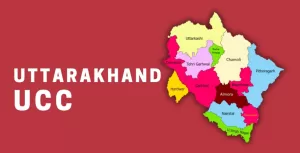The Wire interviews Hari Sharma
[The desert locust is a deadly agricultural pest that has been on a feeding spree across North Africa, West Asia and South Asia. Lore and mentions of locust swarms exist in the Mahabharata, the Bible and the Quran. But it has been largely absent from the collective memory of urban societies until recently, when locust swarms were found in New Delhi and Jaipur.
Hari Sharma, a globally renowned agricultural scientist formerly associated with the International Crop Research Institute for the Semi-Arid Tropics (ICRISAT), says South Asia could have prevented the debilitating locust infestation if India and Pakistan had heeded warnings sent as early as February this year from the UN’s Food and Agricultural Organisation.
In this interview for The Wire with Kunal Shankar, Sharma discusses the issue of locusts and whether climate change has altered the agricultural pests’ behaviours, leading to more virulent attacks. Edited excerpts follow.]
Dr Sharma, thank you for speaking to The Wire. Let me begin with a basic question – what exactly are locusts? And are they seasonal?
Locusts are insects. We could call them grasshoppers. Generally, in the grasslands, they live a solitary life, not in groups. But when the population density is high, they secrete a pheromone to communicate with each other to assume what is called a gregarious phase, which means they become aggressive. That is when they form swarms and begin looking for high-density food areas.
Their pheromonal communication informs them of wind patterns as it determines rainfall, which means more vegetation. They move with the winds and follow a definite cycle from the Saharan desert in North Africa, into East Africa – Ethiopia, Kenya, Eritrea and parts of Chad. They then move to the Arabian Peninsula and Iran. When they finish the food there, they move over to Pakistan and India. Then, they will also go back to their initial habitats.
So it is a cyclical pattern, with their return to sub-Saharan Africa or the Horn of Africa.
Yes, because large chunks of land in sub-Saharan Africa are not cultivated. These lands are only used for grazing. Since there is little agricultural activity there, the locusts survive and multiply by the millions.
Are they a danger to agriculture production and food security?
Yes. About 50-100 years ago, when there were more barren lands, these locust swarms used to be a more regular occurrence—once every three years or so in north-western and central India. Under the British, the first governmental position in agriculture that was created was that of a locust entomologist. The position was later changed to plant protection advisor to the Government of India. And the Directorate of Plant Protection was mainly established to monitor and devise methods to check locust invasions and prevent crop loss.
I understand this eventually led to the formation of the Locust Warning Organisation.
Yes, under the Food and Agriculture Organisation, there is a locust monitoring and warning system, which informs countries in advance about a possible locust swarm invasion. India and Pakistan were warned two-and-half months ago about possible locust movement from eastern Africa and the Iranian Peninsula. So, we knew they were headed towards us.
So, we were expecting this attack for over two months now?
Yes. We had clear information. Indian and Pakistani crop protection scientists were already working in Rajasthan and Sindh areas to control them. But in India, the actual action usually does not start until we face a serious problem.
Does that mean we could have intervened earlier to prevent this attack?
Yes, we should have undertaken aerial spraying to control them when they were in the desert areas of Rajasthan and Sindh. Now, they have moved to more intensively cultivated areas and with greater human habitations. So, the government is saying, ‘We will take up aerial spraying with drones.’ But there is also the risk of contaminating much of our food supplies with pesticide. Human populations, cattle and birds would be exposed to the hazards of pesticides as well.
If I understand what you are saying correctly, if we had effectively dealt with the locust swarms in Rajasthan and Sindh – where they have been more seasonal over the years – we could have prevented this swarm from moving further east?
Yes, the moment we spotted them in western Pakistan and Balochistan, while they had just begun entering the Thar desert and Rajasthan, we should have undertaken control measures then and there, and they would have been more effective and least disruptive.
And it would not have been as big a problem as it has now become—it has even been spotted in Delhi.
Yes.
How would containment measures contaminate our food supply chain?
Well, aerial spraying affects birds, humans and other mammals. The pesticide will fall on vegetables, fruits and they will then come to the market. That poses a serious problem.
Are there better alternatives?
The only safer option is to spray neem seed kernel extracts or neem oil. But this does not kill the locust, it deters them from feeding on the crops. It is a bitter substance that ensures locusts do not feed on crops. There is another species from Himachal Pradesh, which is also locust resistant, and it can also be used to prevent crop destruction.
Could this be done on a mass scale?
Well, neem-based formulations are in the market for use in organic agriculture. But the quantity available would be enough just for a kitchen garden.
So, we were not prepared to deal with this attack, much like the COVID-19 pandemic.
I am afraid so.
Who should be held accountable in this case?
There is a plant protection officer to the Government of India, based in Faridabad at the Directorate of Plant Protection within the Department of Agriculture, which is again under the Ministry of Agriculture. They are the primary agency that handles the locust monitoring and warning system. Then of course, the Indian Council for Agricultural Research (ICAR), which is the largest agricultural system in the world. They should have warned the government as well.
Would you know if they did forewarn the government? And is it possible that the government did not react adequately?
The ICAR and the Department of Agriculture are both part of the government. They held some meetings, but only after the locust had already reached Rajasthan and Jaipur.
Which is just in the past two weeks.
Yes, when we began hearing news about aerial spraying. This action should have been taken one and half months before.
You mentioned the threat to food security. The Rabi harvest is reported to be a bumper one this season. Should we still be worried about food shortages? And should we be more concerned about the Kharif harvest?
At the moment, we must be concerned about the individual farmers who have standing crops, which are likely to suffer damage. Because the locust feeds on practically everything. They do not leave anything except twigs.
Right. Why is this attack particularly virulent? And why nearly after 30 years?
Well, one reason could be the rainfall pattern. If there is plenty of rain in the Sahara, then suddenly there is a lot of food available for the grasshoppers. And once they have a lot of food, their population multiplies. Each female grasshopper lays about 500-600 eggs. Whenever there are good rains in the desert, all the eggs hatch at the same time. Because they sense the moisture as a stimulus for the availability of food. And if there is also plenty of rainfall in eastern Africa, then they migrate to this area, and then move again with the wind currents to Iran and Pakistan and that’s how the swarms keep multiplying.
If these swarms could be due to changes in rain patterns, then do you think changes in pest behaviour could be linked to climate change?
Yes. In fact, this could be directly linked to the rainfall patterns that we experienced last year, when there were a lot of winter rains. It could be compared to the rains during the monsoon. If you take the period from October 15, 2019 to March 15, 2020, there was a lot of rain, which would provide plenty of food for the grasshoppers.
So the virulence of this locust attack can be linked to changes in the global weather patterns.
Yes. For example, I am in Himachal Pradesh and in the past month, I have already witnessed three or four thunderstorms and rains. Normally, we in the Shivalik Hills and the lower Shivalik get about one-and-a-half to two months of a dry period around this time. But this year, that dry period is missing. The dry period is the summer. The summer heat leads to the movement of winds from the sea to land, and that causes the monsoon rains.
Could this unusually high rainfall also explain the bumper Rabi harvest?
That’s right. The bumper Rabi harvest is because we have had possibly twice the amount of winter rains this year than the average.
There are reports of plentiful food for the next six months and beyond in India’s Food Corporation godowns. But given the COVID-19 pandemic and food shortages among migrant workers and the strain that lockdowns have placed on supply chains, do you think this locust attack could exacerbate the situation?
This is when paddy transplantation happens in Punjab, Haryana, western Uttar Pradesh and the whole of western India. If the locust attack persists, it will certainly affect the rice harvest this monsoon season. Of course, as you said, we have plenty of stock of rice and wheat in our godowns. But fruits and vegetables, which are currently in the fields, would definitely be affected.
Could Southern India also face this devastation?
No, locusts usually do not travel to the southern parts of India. The monsoon rains tend to cause a disease – a sort of infection among the locusts, and their population automatically reduces. They would also be completing their lifecycle by then. These grasshoppers do not survive beyond two-and-a-half months. The eggs laid in the soil would hatch the next monsoon, which is about six to seven months.
Let us hope this locust attack is contained in the best way possible.
Farmers and government agencies are now aware of the threat. One way to deal with it is to collect the locust and use it as human or animal food. Grasshoppers are eaten by several communities. We could also collect them and process them before they are fed to animals.
(Interview by Kunal Shankar, who is a freelance journalist. Article courtesy The Wire.)




